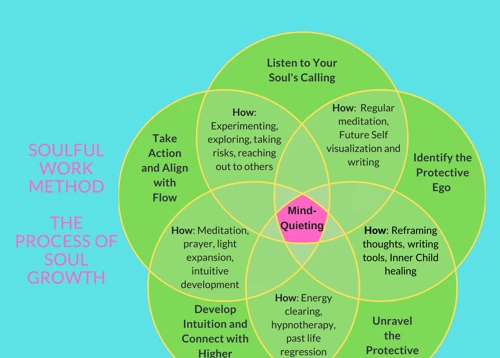Embarking on a journey of self-discovery and unlocking the power of your intuition can be an exciting and transformative experience. Meditation is a powerful tool that can help you develop and strengthen your intuition, allowing you to tap into your inner wisdom and guidance. In this article, we will explore the guidelines and techniques for creating a meditation practice specifically designed to enhance your intuition. Whether you’re new to meditation or have some experience, these step-by-step guidelines will provide you with the tools and insights you need to cultivate a practice that fosters clarity, connection, and intuition. So, let’s dive in and discover the incredible benefits of meditation for intuition development.
Contents
- Benefits of Meditation
- Preparing for Meditation
- Types of Meditation for Intuition Development
- Techniques for Enhancing Intuition
- Developing Psychic Senses
- Meditation Practice for Intuition Development
- Tips for a Successful Meditation Practice
- Conclusion
-
Frequently Asked Questions
- 1. Can anyone practice meditation for intuition development?
- 2. How long should I meditate each day?
- 3. What is mindfulness meditation?
- 4. How does visualization meditation enhance intuition?
- 5. Can meditation help me connect with my spirit guides?
- 6. Is there a specific posture I should use for meditation?
- 7. How can breathing techniques aid intuition development?
- 8. Can journaling complement my meditation practice?
- 9. Is it normal to feel restless or have a wandering mind during meditation?
- 10. Can meditation improve my overall well-being besides intuition development?
- References
Benefits of Meditation
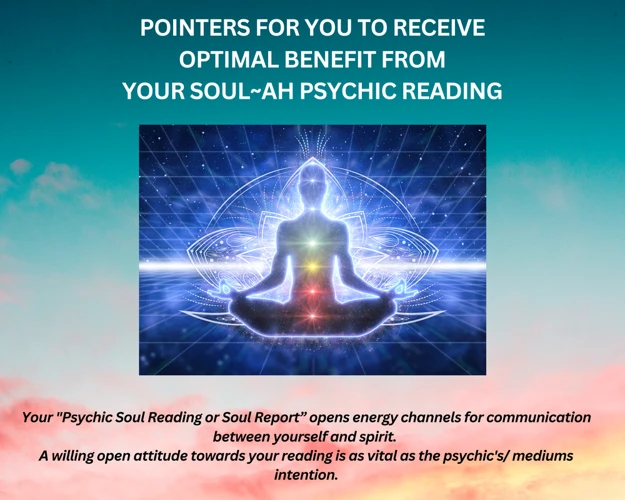
- Reduces Mental Noise: A cluttered mind can hinder your ability to tap into your intuition. Meditation helps quiet the constant stream of thoughts and allows you to enter a state of calm and clarity, minimizing mental distractions that can interfere with your intuitive abilities.
- Increases Focus and Concentration: Regular meditation practice enhances your ability to focus and concentrate. This heightened focus helps you stay present and attuned to the subtle messages and signals from your intuition, allowing you to better interpret and understand them.
- Balances Emotions: Emotions can cloud your intuition and lead to confusion. Through meditation, you can develop emotional awareness and learn to cultivate a sense of inner balance and equilibrium. This emotional stability enables you to make decisions from a place of clarity rather than being influenced by turbulent emotions.
By incorporating meditation into your daily routine, you can experience these profound benefits that support the development of your intuition. Start meditating for intuition development and unlock the potential of your inner wisdom and guidance.
Reduces Mental Noise
Mental noise, characterized by a constant stream of thoughts, can impede our ability to connect with our intuition. However, through the practice of meditation, we can effectively reduce this mental noise and create a space of clarity and stillness. By focusing on our breath or a specific point of focus, we train our minds to let go of distracting thoughts and enter a state of connection with our inner selves. Through regular meditation practice, we cultivate a sense of calm and quietude, allowing our intuitive insights to rise to the surface. Additionally, incorporating mantras into our meditation practice can further quiet the mind and enhance our intuitive connection.
Increases Focus and Concentration
Meditation is a powerful practice that can significantly enhance your ability to focus and concentrate. Here are some ways in which meditation helps improve your focus and concentration:
- Mindfulness: When you practice mindfulness meditation, you train your mind to stay present in the current moment. By bringing your attention to your breath, sensations, or a specific focal point, you develop an awareness of the present moment and learn to let go of distractions and wandering thoughts. This heightened state of awareness improves your ability to concentrate on the task at hand and stay focused on your intuitive insights.
- Breath Control: Breathing techniques are often incorporated into meditation practices. These techniques involve focusing on your breath and controlling the depth and rhythm of your inhalations and exhalations. By directing your attention to your breath, you cultivate a sense of calmness and concentration. This intentional breath control helps clear your mind and enhances your ability to concentrate on your intuitive experiences.
- Neuroplasticity: Regular meditation has been shown to influence the structure and function of the brain. It promotes neuroplasticity, which is the brain’s ability to adapt and change. Through consistent practice, you can strengthen the neural pathways associated with focus and concentration, making it easier for you to stay attentive and focused on your intuition.
- Single-Pointedness: Some meditation techniques involve focusing on a single point of focus, such as a specific word or mantra, a visualized image, or a candle flame. This practice of single-pointedness helps train your mind to concentrate on one thing at a time, reducing mental clutter and distractions. As a result, you develop the ability to sustain your focus and concentration for longer periods.
- Stress Reduction: Meditation is known for its ability to reduce stress and promote relaxation. By calming the mind and reducing stress levels, meditation creates an optimal environment for enhanced focus and concentration. When your mind is free from stress and anxiety, you can sharpen your focus and better connect with your intuitive insights.
Incorporating meditation into your routine is an effective way to improve your focus and concentration, enabling you to harness the power of your intuition. So, make meditation a regular practice and strengthen your focus and concentration for intuition development.
Balances Emotions
When it comes to developing your intuition, achieving emotional balance is crucial. Meditation can significantly contribute to this by helping you to balance your emotions. Here are some ways meditation can assist in this process:
- Emotional Awareness: Through meditation, you can cultivate a deeper awareness of both positive and negative emotions. This awareness allows you to acknowledge and understand your emotions without judgment. By observing your emotions without attaching to them, you can develop a greater sense of emotional balance.
- Regulates Emotions: Regular meditation practice has been shown to regulate the release and production of certain hormones and neurotransmitters that are responsible for emotions. This regulation helps create a sense of equilibrium in your emotional state, preventing extreme highs and lows.
- Reduces Stress: Stress can greatly influence your emotional well-being and cloud your intuition. Meditation is a powerful tool for reducing stress levels. By practicing meditation, you activate the body’s relaxation response, which lowers stress hormones and promotes a sense of inner calm and tranquility.
By incorporating meditation into your daily routine, you can develop emotional balance and foster a greater sense of calm and stability. This emotional equilibrium provides a solid foundation necessary for the development of your intuition.
Preparing for Meditation
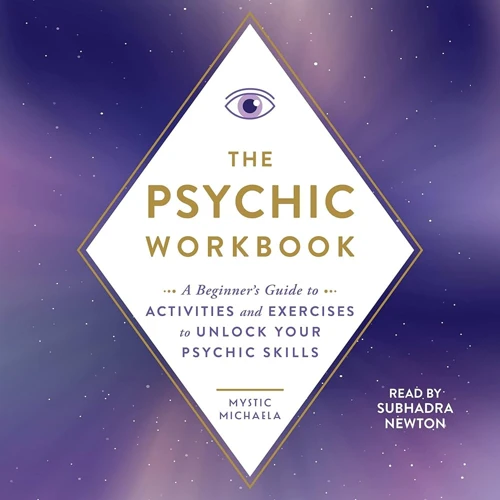
- Create a Peaceful Environment: Find a quiet and serene space where you can practice meditation without disturbances. Remove any clutter and create an environment that promotes relaxation and tranquility. You may choose to light candles, play soft music, or incorporate soothing scents to enhance the peaceful atmosphere.
- Choose a Comfortable Posture: Find a posture that allows you to be both comfortable and alert. You can sit on a cushion or chair with a straight spine, or even lie down if that is more comfortable for you. The important thing is to maintain a posture that promotes relaxation while keeping you awake and focused.
- Set Intentions: Before you start your meditation practice, take a moment to set your intentions. This can be as simple as stating your desire to connect with your intuition, cultivate inner wisdom, or gain clarity. Setting intentions helps focus your mind and align your energy towards the specific goal of developing your intuition.
By taking these preparatory steps, you create a supportive foundation for your meditation practice and set yourself up for a deeper and more fulfilling experience. Remember, the key is to create a peaceful environment, find a posture that works for you, and set clear intentions before diving into your meditation practice.
Create a Peaceful Environment
When creating a meditation practice for intuition development, it is essential to create a peaceful environment that cultivates a sense of calm and tranquility. Find a quiet space where you can be free from distractions and interruptions. Keep the area clean and clutter-free, allowing for a clear and open space. Consider incorporating elements that promote relaxation, such as soft lighting, soothing music, or a calming scent. Arrange cushions or a comfortable chair for sitting. Dim the lights or use natural lighting to create a serene ambiance. By creating a peaceful environment, you can enhance your meditation experience and create a space conducive to deepening your connection with your intuition.
Choose a Comfortable Posture
- Sitting Cross-Legged: This classic meditation posture involves sitting on a cushion or yoga mat with your legs crossed. Place your hands on your knees or in a comfortable position, and keep your spine straight but relaxed. This posture allows for stability and grounding during your meditation practice.
- Chair Meditation: If sitting cross-legged is uncomfortable for you, opt for a chair meditation posture. Sit upright in a chair with your feet flat on the floor and your hands resting gently on your thighs. Ensure that your back is straight, and your shoulders are relaxed. This posture provides support and comfort, especially for those with physical limitations or discomfort in cross-legged positions.
- Lying Down: For individuals who find sitting positions challenging, lying down is a suitable alternative. Lie comfortably on your back, either on a yoga mat or in bed. Place a pillow under your head and knees to maintain spinal alignment. Keep your arms by your sides or resting gently on your belly. While lying down can induce relaxation, it’s important to stay mentally alert during your meditation practice.
Choosing a comfortable posture is crucial for sustaining a relaxed and focused state during meditation. Find the posture that works best for you, ensuring that you’re comfortable and supported throughout your practice.
Set Intentions
Setting intentions before you begin your meditation practice is a powerful way to align your focus and energy towards developing your intuition. Think of intentions as the guiding principles or goals that you wish to achieve through your meditation practice. By setting clear intentions, you create a specific direction for your meditation and enhance its effectiveness.
To set intentions for your meditation practice, start by reflecting on what you hope to gain from developing your intuition. Are you seeking clarity in decision-making, deeper self-understanding, or a stronger connection to your spiritual guides? Whatever your intentions may be, state them clearly and concisely in your mind or write them down before each meditation session.
As you enter into your meditation, carry your intentions with you and keep them at the forefront of your awareness. This mental focus will help you stay aligned throughout your practice and provide a sense of purpose and direction. Remember to revisit and refine your intentions on a regular basis to ensure they remain in alignment with your evolving goals and aspirations.
By consciously setting intentions for your meditation practice, you create a powerful framework for developing your intuition and aligning your energy towards your desired outcomes. Embrace this practice and witness the transformative effects it can have on your intuitive abilities.
Types of Meditation for Intuition Development
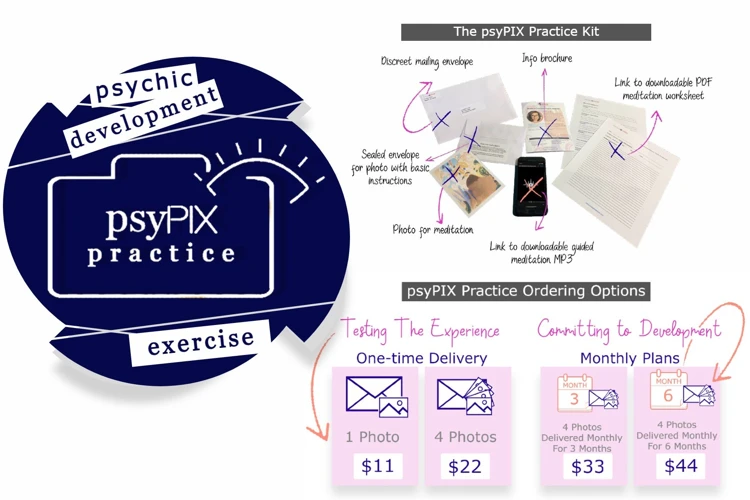
- Mindfulness Meditation: Mindfulness meditation involves bringing your awareness to the present moment. It cultivates a state of non-judgmental observation of your thoughts, emotions, and sensations. This practice helps you develop a deeper connection with your intuition by increasing your ability to notice and tune into subtle signals and insights.
- Visualization Meditation: Visualization meditation involves using your imagination to create vivid mental images. By visualizing your desired outcomes or connecting with specific symbols or images, you can amplify your intuitive abilities. This practice strengthens the connection between your intuition and your creative faculties, offering a powerful tool for receiving guidance.
- Affirmation Meditation: Affirmation meditation involves repeating positive affirmations or mantras to cultivate a specific mindset or belief. By affirming your intuition and trusting in its guidance, you can strengthen your connection to your inner wisdom. This practice helps overcome self-doubt and allows you to tap into the intuitive insights that arise.
Exploring these different types of meditation can provide you with a range of techniques to develop and enhance your intuition. Incorporate them into your meditation practice to discover which methods resonate with you the most and support your intuitive growth.
Mindfulness Meditation
Mindfulness meditation is a practice that involves bringing your attention to the present moment with non-judgmental awareness. During mindfulness meditation, you focus your attention on your breath, bodily sensations, thoughts, and emotions as they arise. The goal is to observe these experiences without getting caught up in them or reacting to them. This practice helps cultivate a sense of deep awareness and presence, allowing you to develop a stronger connection with your intuition. By honing your ability to stay fully present, you can better recognize the subtle messages and guidance that arise from within. So, embrace the power of mindfulness meditation and enhance your intuitive abilities.
Visualization Meditation
Visualization meditation is a powerful technique that harnesses the power of imagination to enhance your intuition. During this type of meditation, you create vivid mental images that align with your intentions and desires. By engaging your senses and emotions, visualization meditation helps you tap into the intuitive wisdom that lies within you.
To practice visualization meditation, find a quiet and comfortable space where you won’t be disturbed. Close your eyes and take a few deep breaths to relax your body and mind. Begin by setting a clear intention for your meditation session. What specific area of your life or intuition do you want to focus on? Once you have set your intention, start visualizing in detail the desired outcomes or scenarios related to your intention. Imagine yourself in specific situations, feeling the emotions associated with those scenarios.
Visualize every detail: sights, sounds, smells, and even physical sensations. The more vivid and detailed your visualization, the more you will engage your intuitive senses. Allow yourself to fully immerse in the experience, suspending any doubts or limitations. Trust that your intuition will guide you towards what is truly aligned with your highest good.
Remember, consistency is key when practicing visualization meditation. Set aside a dedicated time each day to visualize and connect with your intuition. As you continue this practice, you will notice your intuitive abilities becoming stronger and more refined. Trust in the process and embrace the insights and guidance that come through your visualization practice. Visualization meditation is a valuable tool for developing and nurturing your intuition.
Affirmation Meditation
Affirmation meditation is a powerful technique for enhancing intuition and cultivating a positive mindset. In this practice, you focus on repeating positive affirmations, which are uplifting statements that reflect your desired beliefs or intentions. By incorporating affirmations into your meditation practice, you can rewire your subconscious mind and align yourself with what you want to manifest.
To begin, find a quiet and peaceful space where you can comfortably sit or lie down. Close your eyes and take a few deep breaths to center yourself. Then, choose an affirmation that resonates with you and relates to developing your intuition. It could be something like, “I trust and follow my intuition with ease and clarity” or “I am open to receiving intuitive guidance in all areas of my life.”
Once you have your chosen affirmation, repeat it silently or out loud during your meditation. Focus on the words and let their positive energy and meaning sink into your subconscious mind. Feel the truth and power behind each statement. Visualize yourself embodying these qualities and believe in the reality of the affirmation.
Continue to repeat the affirmation for a few minutes or for as long as feels comfortable. If your mind starts to wander, gently bring your attention back to the affirmation. This practice helps to reprogram your subconscious mind, aligning it with your intuitive abilities and strengthening your belief in your own intuition.
Incorporating affirmation meditation into your regular practice can have a profound impact on your intuition and overall well-being. It can help you overcome self-doubt, build confidence in your intuitive abilities, and create a positive mindset that supports your intuitive development. Remember to be consistent and patient with this practice, allowing the affirmations to work their magic over time.
Techniques for Enhancing Intuition
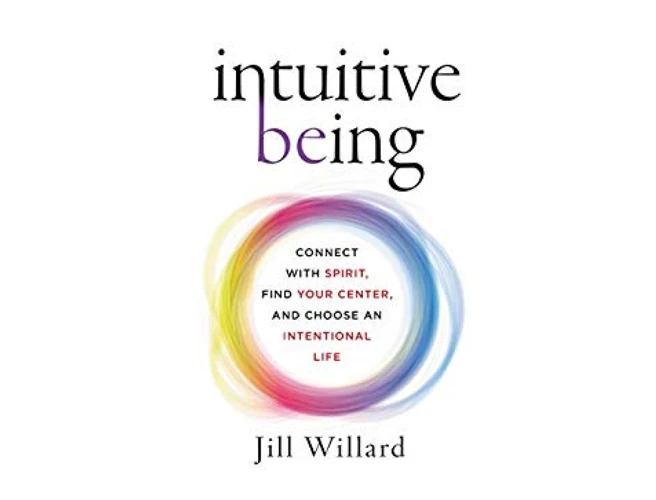
Focusing on your breath is a powerful technique for enhancing your intuition. Practice deep, slow breathing to calm the mind and cultivate inner stillness. Paying attention to your breath allows you to anchor your awareness in the present moment and create a harmonious connection with your intuitive insights. Explore different breathing exercises, such as alternate nostril breathing or belly breathing, to deepen your practice and strengthen your intuitive abilities.
Body scan meditation involves systematically directing your attention to different parts of your body, bringing awareness and relaxation to each area. This technique helps you develop a deeper connection with your physical sensations and brings you into the present moment. By scanning your body, you can also become more attuned to subtle energetic shifts and sensations, which can facilitate the development and awareness of your intuition.
Combining meditation with journaling can be a powerful way to enhance your intuition. After each meditation session, take a few moments to reflect on any insights or intuitive guidance that may have arisen. Write down your thoughts, feelings, and any intuitive messages received. Journaling helps you to further explore and analyze your intuitive experiences, allowing you to gain clarity and develop a deeper understanding of your inner wisdom. This practice also helps you track your progress and patterns over time.
By incorporating these techniques into your meditation practice, you can further enhance your intuition and deepen your connection with your inner guidance.
Breathing Techniques
Proper breathing techniques are essential for enhancing your intuition during meditation. Here are some valuable techniques to incorporate into your practice:
- Deep Belly Breathing: This technique involves taking slow, deep breaths that expand your belly as you inhale and contract it as you exhale. Deep belly breathing helps relax the body, calm the mind, and create a sense of grounding, making it easier to tune into your intuition.
- Equal Breathing: With this technique, you inhale and exhale for an equal count. For example, you can breathe in for a count of four, hold for a count of four, and exhale for a count of four. This rhythmic breath pattern brings balance to your body and mind, fostering a conducive environment for intuition to flourish.
- Alternate Nostril Breathing: In this technique, you alternate your breath between the right and left nostrils using your fingers to close off one nostril while inhaling and exhaling through the other. Alternate nostril breathing helps harmonize the left and right hemispheres of the brain, promoting mental clarity and intuition.
Incorporating these breathing techniques into your meditation practice can help you cultivate a state of deep relaxation, focus, and receptiveness, facilitating the development of your intuition.
Body Scan Meditation
- Focus on the Breath: Begin by bringing your attention to your breath. Take a few deep breaths, allowing your body and mind to relax.
- Start at the Toes: Direct your focus to your toes. With each breath, imagine the breath flowing down to your toes, bringing relaxation and awareness to that area of your body.
- Slowly Move Up the Body: Continue to move your attention slowly up your body, one body part at a time. Notice any sensations, tensions, or feelings of relaxation in each area.
- Release Tension: If you notice any tension or tightness in a particular area, imagine breathing into that area and releasing the tension with each exhale.
- Stay Present: As you scan each body part, try to stay present and fully focused on the sensations you are experiencing. If your mind starts to wander, gently bring your attention back to the body part you are scanning.
- Finish with a Full Body Scan: When you reach the top of your head, take a few moments to do a full body scan, bringing your attention to your body as a whole. Notice any shifts or changes in how you are feeling.
Body scan meditation is a powerful technique that helps you cultivate a deep connection with your body and develop body awareness. Through regular practice, you will become more attuned to the subtle sensations and messages from your body, which can be valuable for enhancing your intuition and self-awareness.
Journaling and Reflective Meditation
Journaling and reflective meditation can be powerful tools for enhancing your intuition. The combination of these practices allows you to delve deeper into your thoughts, emotions, and experiences, ultimately leading to a greater understanding of yourself and the intuitive insights that arise.
When practicing journaling and reflective meditation, find a quiet and comfortable space where you can sit undisturbed. Begin by taking a few deep breaths to center yourself and bring your focus inward. Then, start writing in your journal, allowing your thoughts and feelings to flow freely onto the page. This process can help uncover hidden patterns, recurring themes, and intuitive messages that may have been buried beneath the surface of your consciousness.
As you engage in reflective meditation, take the time to carefully read over what you have written. Pay attention to any recurring symbols, emotions, or ideas that emerge. Reflect on the meaning behind these patterns and explore how they may relate to your intuition. You can also pose specific questions to your intuition, seeking guidance and clarity on particular aspects of your life or decision-making process.
The act of journaling and engaging in reflective meditation allows you to create a record of your intuitive experiences and observations. It serves as a valuable tool for tracking your progress, gaining insights, and deepening your connection with your intuition over time. Remember, there is no right or wrong way to journal or reflect on your experiences. Simply allow yourself to explore and be open to the guidance that emerges.
Incorporating journaling and reflective meditation into your meditation practice can greatly enhance your intuition by providing a space for self-reflection, self-discovery, and the integration of intuitive insights into your everyday life. So grab a journal, find a quiet corner, and embark on this journey of self-exploration and intuitive growth through journaling and reflective meditation.
Developing Psychic Senses

Developing psychic senses is an integral part of enhancing your intuition. Through various techniques and practices, you can tap into your psychic abilities and strengthen your connection to the spiritual realm.
Third Eye Activation:
The third eye, also known as the inner eye or the ajna chakra, is associated with intuition and psychic vision. You can activate and open your third eye through meditation practices such as focusing on the point between your eyebrows, using visualization techniques, or chanting specific mantras. Developing a strong and awakened third eye can enhance your ability to receive intuitive insights and perceive subtle energies.
Aura Cleansing and Strengthening:
Your aura is an energetic field that surrounds your physical body. Cleansing and strengthening your aura is essential for developing your psychic senses. You can achieve this through meditation techniques such as visualizing a cleansing white light enveloping and purifying your aura. Regular aura cleansing practices help remove any energetic blockages or negative influences, allowing your intuition to flow more freely.
Connecting with Spirit Guides:
Spirit guides are non-physical beings who offer guidance and support on your spiritual journey. Through meditation, you can establish a deeper connection with your spirit guides. Set the intention to connect with them, and then visualize or imagine yourself in a peaceful space where you can meet and communicate with them. Trust the messages, impressions, or symbols that come through during these encounters, as they can provide valuable insights and guidance.
By incorporating these practices into your meditation routine, you can develop and strengthen your psychic senses, enabling you to access a deeper level of intuitive wisdom and understanding.
Third Eye Activation
Third Eye Activation is a technique used in meditation to awaken and stimulate the energy center known as the third eye, or the pineal gland. The third eye is believed to be the seat of intuition and inner vision. By practicing specific meditation techniques such as focusing on the point between the eyebrows or chanting the ‘OM’ sound, you can activate and open your third eye, allowing for a heightened sense of insight, intuition, and spiritual perception. This practice helps to expand your consciousness and connect with your higher self, leading to a deeper understanding of yourself and the world around you. So, if you’re seeking to enhance your intuitive abilities, consider incorporating Third Eye Activation techniques into your meditation practice for a profound spiritual experience.
Aura Cleansing and Strengthening
A key aspect of developing your intuition is to cleanse and strengthen your aura. Your aura is the subtle energetic field that surrounds and permeates your physical body, and it is directly connected to your intuitive abilities. Cleansing and strengthening your aura through meditation can enhance your intuitive senses and facilitate a clearer connection to your higher self and spiritual realm.
Aura Cleansing: To cleanse your aura, begin by finding a quiet and comfortable space for meditation. Close your eyes and take several deep, cleansing breaths. Visualize a brilliant white light surrounding your body, encompassing your entire aura. As you continue breathing, imagine this white light flowing through your aura, purifying and cleansing any negative or stagnant energy. Feel the weight of any energetic debris being released and dissolved, allowing your aura to become clear and vibrant.
Aura Strengthening: After cleansing your aura, focus on strengthening it. Visualize a brilliant, protective shield surrounding your aura, acting as a barrier against any negative energies or influences. This shield can be any color that resonates with you – visualize it as strong, solid, and impenetrable. As you practice this visualization, intend for your aura to become strong and resilient, able to ward off any negativity and maintain your energetic boundaries.
Regularly incorporating aura cleansing and strengthening meditations into your practice can help you maintain a clear and vibrant energy field, which is crucial for fostering and enhancing your intuition. When your aura is balanced, you are better able to receive and interpret intuitive messages and guidance. By dedicating time to focus on your aura, you are actively nurturing and supporting the development of your intuition.
Connecting with Spirit Guides
Connecting with spirit guides through meditation can be a profound and transformative experience. These spiritual entities are beings of light and wisdom who are here to guide and support us on our life journey. Here are some techniques you can use to enhance your ability to connect with your spirit guides:
- Awareness and Intention: Set the intention to connect with your spirit guides before you begin your meditation practice. Be open and receptive to their presence, and trust that they are with you.
- Visualization: Use visualization techniques to create a mental image of meeting and communicating with your spirit guide. Imagine a peaceful and sacred space in your mind where you can meet and connect with them.
- Quiet the Mind: Clear your mind of any distractions or concerns and enter a state of relaxation and receptivity. Focus on your breath and let go of any thoughts or worries that may arise.
- Ask for Guidance: Once you feel a connection with your spirit guide, ask for their guidance and support. You can pose specific questions or simply ask for general guidance in your life. Trust that the answers and insights will come in the form of intuitive impressions, thoughts, or feelings.
- Gratitude and Appreciation: Express gratitude and appreciation for the guidance and support you receive from your spirit guides. This will strengthen your connection and deepen your relationship with them.
Remember, connecting with spirit guides is a personal and unique experience. Be patient and trust the process. With regular meditation practice, you can cultivate a deep and meaningful connection with your spirit guides, receiving their wisdom and guidance on your intuition development journey.
Meditation Practice for Intuition Development

Before you begin your meditation practice for intuition development, it’s important to set clear intentions and goals. Reflect on what you hope to achieve through your meditation practice. Do you seek to enhance your intuitive abilities, gain clarity on a specific issue, or simply cultivate a deeper connection with your inner self? Setting these goals will help guide your practice and provide a sense of direction.
When starting your meditation practice, it’s recommended to begin with shorter sessions, especially if you’re new to meditation. Starting with 5-10 minutes per day allows you to establish a routine and gradually build your meditation muscle. As you become more comfortable and consistent, you can gradually increase the duration of your sessions.
As you become more experienced in your meditation practice, aim to gradually increase the duration of your sessions. This progressive increase can help you deepen your meditation practice and strengthen your ability to access your intuition. Aim for 20-30 minutes per session or whatever feels comfortable for you.
Remember, meditation is a journey, and it’s important to be patient with yourself as you develop your practice. With time and consistency, you will witness the growth and expansion of your intuitive abilities. Embrace the process and trust in the transformative power of your meditation practice for intuition development.
Setting Meditation Goals
Setting meditation goals is an essential step in developing your intuition. When you set specific goals for your meditation practice, you provide yourself with a clear intention and direction for your sessions. These goals could include enhancing your intuitive abilities, deepening your connection with your inner guidance, or gaining clarity on a particular area of your life. Having clear and specific goals ensures that you are intentional and focused during your meditation practice, maximizing its effectiveness in fostering intuition. By setting meditation goals, you create a roadmap for your growth and progress, allowing you to track your development over time and stay motivated on your intuitive journey.
Starting with Short Sessions
Starting with short meditation sessions is a key strategy for establishing a consistent and sustainable meditation practice for intuition development. Here are some benefits and tips to consider:
- Builds Consistency: Starting with short sessions allows you to incorporate meditation into your daily routine more easily. It’s better to meditate for a few minutes every day than to have longer sessions sporadically. Consistency is key to reaping the long-term benefits of meditation for intuition.
- Reduces Overwhelm: Longer meditation sessions can be overwhelming, especially for beginners. Starting with shorter sessions, such as 5-10 minutes, allows you to gradually adjust and build your meditation muscle without feeling overwhelmed.
- Establishes a Habit: By starting with short sessions, you’re more likely to establish a regular meditation habit. Once meditation becomes a habit, it becomes easier to increase the duration over time.
Remember, the goal is to create a sustainable practice that you can maintain consistently. Starting with short meditation sessions and gradually increasing the duration will set a strong foundation for your intuition development journey.
Progressive Increases in Duration
When establishing a meditation practice for intuition development, it is important to gradually increase the duration of your meditation sessions over time. Starting with shorter sessions and progressively extending the duration allows your mind and body to adjust and build stamina. This progressive approach prevents fatigue or frustration and encourages consistency in your practice.
Begin by setting a realistic goal for the duration of your meditation sessions. It could be as short as five minutes, depending on your comfort level and schedule. Commit to this duration for a week or two, focusing on establishing a regular meditation habit. As you become more comfortable and consistent, gradually increase the duration by a few minutes.
Listen to your body and intuition when deciding how much to extend your sessions. If you feel ready for longer meditation periods, add an extra five minutes or more. Take note of how your mind and body respond to these increases and make adjustments accordingly. However, be mindful not to push yourself too hard or expect immediate results. The journey of developing intuition through meditation is a gradual process that requires patience and dedication.
By progressively increasing the duration of your meditation sessions, you build resilience and deepen your connection with your intuition over time. Remember, it’s not about the length of time you meditate, but rather the quality of your practice and your consistency. Embrace the growth mindset and celebrate each step towards expanding your meditation practice for intuition development.
Tips for a Successful Meditation Practice
- Consistency is Key: Establish a regular meditation practice by setting aside a specific time and place for your sessions. Consistency helps train your mind and body to enter a meditative state more easily, and it allows for deeper and more meaningful experiences.
- Deepening Your Practice over Time: As you become more comfortable with meditation, consider incorporating advanced techniques such as connection meditation or meditation with mantras. These practices can deepen your intuition and foster a stronger connection with your inner guidance.
- Be Gentle with Yourself: Remember that meditation is a journey, and it’s natural to have ups and downs along the way. Be patient and compassionate with yourself, accepting whatever arises during your meditation practice without judgment. Trust that each session, regardless of the experience, contributes to your overall growth and development.
By incorporating these tips into your meditation practice, you can create an environment that supports the cultivation of your intuition. Remember, developing intuition through meditation is a personal and unique journey, so trust your own process and enjoy the transformative benefits it brings.
Consistency is Key
Consistency is key when it comes to developing a successful meditation practice for enhancing intuition. Setting aside dedicated time each day to practice meditation is essential for reaping the full benefits. It’s important to establish a routine that works for you and stick to it. Whether it’s in the morning, during a lunch break, or in the evening, find a time that aligns with your schedule and commit to it. Consistency allows you to build momentum, deepen your practice, and create a habit that becomes ingrained in your daily life. By prioritizing regular meditation sessions, you create a space for your intuition to blossom and grow stronger over time. Stay committed, stay consistent, and watch as your intuition expands and guides you in transformative ways.
Deepening Your Practice over Time
Deepening your meditation practice over time is essential for expanding and strengthening your intuition. As you continue to cultivate your practice, you can enhance its effectiveness and take it to new heights. Here are some ways to deepen your practice:
1. Explore Different Meditation Techniques: Experiment with various meditation techniques to discover what resonates with you. This exploration allows you to tap into different aspects of your intuition and explore new realms of consciousness. Whether it’s mindfulness meditation, visualization meditation, or affirmation meditation, each technique offers unique benefits for intuition development.
2. Increase Meditation Duration: Gradually increase the duration of your meditation sessions as you become more comfortable and experienced. Starting with shorter sessions and gradually lengthening them allows your mind and body to adapt and go deeper into a meditative state. As you spend more time in meditation, you’ll notice a greater connection to your intuition.
3. Incorporate Rituals: Adding rituals to your meditation practice can deepen your connection to the practice itself. This could involve lighting a candle, burning incense, or setting intentions before each session. These rituals help create a sacred space and set the tone for a focused and intentional meditation experience.
4. Seek Guidance and Support: Consider seeking guidance from experienced meditators or joining a meditation group or community. Learning from others who are on a similar path can provide valuable insights and encouragement. Additionally, having a support system can keep you motivated and accountable for maintaining a regular meditation practice.
5. Practice Mindfulness in Daily Life: Extend the benefits of your meditation practice by incorporating mindfulness into your daily activities. Being fully present in each moment allows you to cultivate a deeper connection with your intuition throughout the day. Whether it’s mindful eating, mindful walking, or simply taking a few mindful breaths, these moments of awareness can expand your intuitive abilities.
By deepening your meditation practice over time, you can unlock new levels of intuition and tap into the limitless potential of your inner guidance. Embrace this journey of self-discovery and allow your intuition to blossom.
Be Gentle with Yourself
When it comes to developing a successful meditation practice for intuition, it is crucial to be gentle with yourself throughout the journey. Here are some important points to keep in mind:
- Practice Non-Judgment: Avoid judging your meditation sessions or yourself. Remember, meditation is a practice, and each session is an opportunity for growth and learning. Embrace any challenges or distractions that arise during your practice without judgment or self-criticism.
- Embrace Imperfections: Your meditation practice doesn’t have to be perfect. It’s normal for the mind to wander or for emotions to arise. Instead of getting frustrated or discouraged, accept these imperfections as part of the process. Simply acknowledge the thoughts or emotions and gently redirect your focus back to your meditation object.
- Be Patient: Developing intuition takes time and consistency. It’s essential to be patient with yourself and trust the process. Avoid putting pressure on yourself to achieve immediate results. Each meditation session is an opportunity to deepen your connection with your intuition, even if it doesn’t feel profound in the moment.
By being gentle with yourself and cultivating an attitude of compassion and acceptance, you create a safe and nurturing space for your intuition to flourish. Remember, meditation is a personal journey, and everyone progresses at their own pace. Embrace the process and enjoy the transformative benefits it brings.
Conclusion
- Consistency is Key: Consistency is essential in building a successful meditation practice for intuition development. Commit to regular meditation sessions, even if it’s just a few minutes a day. Consistency allows you to deepen your practice and reap the full benefits of meditation.
- Deepening Your Practice over Time: As you continue to meditate, you may find that your intuition becomes more refined and accurate. Embrace this growth and explore advanced meditation techniques, such as connecting with your intuition through meditation or incorporating mantras for intuition enhancement. Continuously challenging yourself and expanding your practice will lead to further development of your intuitive abilities.
- Be Gentle with Yourself: It’s important to approach your meditation practice with kindness and compassion. Understand that progress may not always be linear, and it’s okay to have off days. Let go of judgment and expectations, and allow yourself to simply be present with your practice. Treat yourself with patience and kindness as you nurture your intuition through meditation.
By following these guidelines and incorporating meditation into your daily routine, you can create a solid foundation for the development of your intuition. Through consistent practice, deepening your practice over time, and practicing self-compassion, you can cultivate a powerful connection with your intuition and tap into its limitless potential. Embrace the transformative journey of meditation and enjoy the profound benefits it brings to your intuition and overall well-being.
Frequently Asked Questions
1. Can anyone practice meditation for intuition development?
Yes, anyone can practice meditation for intuition development. It is a universal practice that is accessible to people of all backgrounds and beliefs.
2. How long should I meditate each day?
The duration of your meditation practice can vary based on your personal preference and schedule. It is recommended to start with shorter sessions, such as 10-15 minutes, and gradually increase the duration as you become more comfortable and experienced.
3. What is mindfulness meditation?
Mindfulness meditation involves bringing your attention to the present moment and observing your thoughts, feelings, and sensations without judgment. This practice helps cultivate awareness and clarity, essential qualities for intuition development.
4. How does visualization meditation enhance intuition?
Visualization meditation involves creating vivid mental images to enhance your ability to visualize and manifest your desires. By regularly practicing visualization, you can strengthen your intuitive visualization skills.
5. Can meditation help me connect with my spirit guides?
Yes, meditation can create a peaceful and receptive state of mind that facilitates connections with your spirit guides and higher self. It helps you create a sacred space for communication and guidance.
6. Is there a specific posture I should use for meditation?
While there are traditional meditation postures like crossed legs or sitting on a cushion, the most important thing is to choose a posture that allows you to be comfortable and relaxed. You can even meditate while sitting in a chair.
7. How can breathing techniques aid intuition development?
Breathing techniques, such as deep diaphragmatic breathing or alternate nostril breathing, help calm the mind, promote relaxation, and enhance focus. When combined with meditation, they can support the development of intuition.
8. Can journaling complement my meditation practice?
Yes, journaling can be a powerful tool to reflect on your meditation experiences and gain insights into your intuition. Writing down your thoughts and impressions can help you identify patterns and deepen your understanding of your inner guidance.
9. Is it normal to feel restless or have a wandering mind during meditation?
Yes, it is common to experience restlessness or a wandering mind during meditation, especially when starting out. The key is to observe these distractions without judgment and gently bring your focus back to your meditation object or breath.
10. Can meditation improve my overall well-being besides intuition development?
Absolutely, meditation has numerous benefits beyond intuition development. It can reduce stress, improve mental clarity, increase self-awareness, and promote a sense of calm and inner peace.

